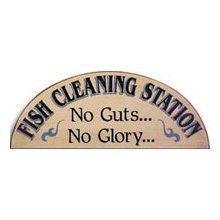So, you have a boatload of fish and it is time to clean them. What do you do with the GUTS?
Most fishermen, that keep fish to eat, find a way to use the entire fish resource. The filets, steaks, or cheeks are great to eat but the whole fish can be useful.
If you are a gardener, think about composting the fish guts. You can lay them into your composter and cover with several inches of leaves, straw, sawdust or woodchips. Allow air to come in and out. If the composter is working, a temperature of at least 130 F will kill any maggots and insects. Odor will be limited because of the cover and aerobic process. Allow the guts to rest for a few weeks before turning with a pitchfork. It is also a good idea to cut the fish parts into smaller pieces. Decomposition will be much faster. Kitchen wastes add to the fertilizer mix.
The minerals and nitrogen produced are outstanding nutrients for the garden. Some gardeners dig a deep trench and simply bury the fish guts. A few shovels of dirt on top and nature does the rest. Remember that dogs, critters and smells can be an issue. Fence in or cover the area. It is also a good idea to keep the rotting guts station at the far corner of the yard. After about 6 months, the composted dirt makes wonderful soil to put around your plants or gardens.
If you are a lake or salt water fisherman, consider freezing the fish guts into Chum Blocks. Simply take the frozen block of chum and sink it with your anchor or a separate weighted line, off the stern. Bottom fishing can get fun fast.
Grinding the fish guts is catching on at Fish Cleaning Stations. The slurry is then pumped into agricultural fields for fertilizer.
Fed Critters end up Dead Critters! Dumping the guts in the woods or fields simply attracts wildlife. If this includes bears, wolves, and other dangerous critters, you may want an alternative plan.
Throwing away your fish guts is a waste.
Montana Grant
For more Montana Grant, find him at www.montanagrantfishing.com.